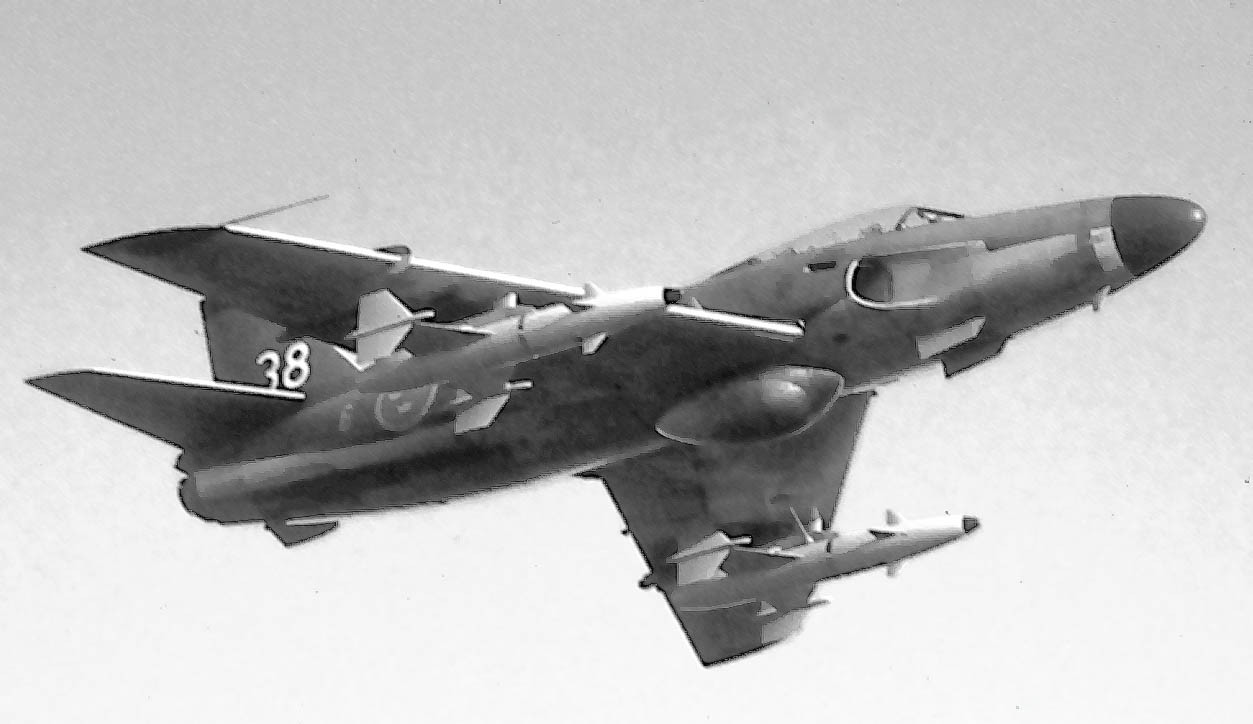- Yes
- No
The Rb 04 (Attackrobot 04) Anti-Ship Missile for A32A Lansen, AJ 37/AJS 37 & SH 37/AJSH 37:
Image: A Swedish A32A Equipped with a pair of Rb 04C or Rb 04D Anti-Ship missiles.
Summarized Background History:
The Rb 04 or also know as Attackrobot 04 or arb 04: Is a Swedish Long-Range, Sea Skimming, Radar Guided / Fire & Forget, Air to Surface Anti-Ship Missile. Which was initally developed and produced by CVA (Centrala Flygverkstaden Arboga) in Arboga. However, last variants of the missile was produced by SAAB. The Rb 04 is also one of the worlds first Radar-Guided, Anti-Ship Missile to be produces and it was from the result of a development project/program, that began within the Armed Forces’ Joint Missile Bureau (Ie. Försvarets Robotbyrå) as early as the late 1940’s: Under the name of “Project 304” (Projekt 304).
The reason Sweden developed this missile was due to the ever-changing geopolitical landscape following the Second World War. With Nazi Germany gone and Europe being divided between the Allies (NATO) and the Soviet Union, it became increasingly clear that the greatest threat to Swedish sovereignty no longer came from the former Nazi-Germany, but from the East—specifically the Soviet Union and its newly established puppet states.
Sweden also found itself in a unique position: its primary threat wasn’t a land invasion involving thousands upon thousands of tanks and armored vehicles; it was the possibility of a full-scale naval invasion by the Soviet Navy in the Baltic Sea. This meant Sweden needed to develop a new type of weapon that could serve, to some extent, as a deterrent—or at the very least, delay a potential invasion by sea.
The Prototype Phase:
The initial variants of the Rb 04 during its testing phase were designated Provrobot 304A. The early focus was on ensuring that the missile’s radar altimeter and autopilot functioned correctly. The altimeter was designed by Philips, while the pneumatic autopilot module (A52) was developed by Saab. The testbed aircraft for the missile was initially the J29 Tunnan, with testing conducted over Lake Vättern near Karlsborg in 1954~1955.
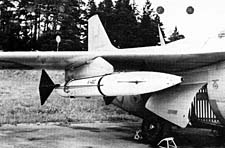 ,
, 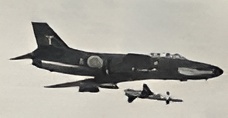
Image Left: Provrobot 304A mounted on the wing of a J29 Tunnan, 1955. Image Right: A32A Lansen conducting a test with a Provrobot 304B (Upscaled, Image Source)
This was soon followed by Provrobot 304B, the final phase of development in which the missile’s radar seeker and proximity fuse were developed. The seeker was a single-plane active radar seeker operating in CW mode (Continuous-Wave radar), designed by AGA (Aktiebolaget Gasaccumulator). At the same time as the radar seeker was tested, the proximity fuse was also tested; it was designed to detonate the warhead when the missile passed over the target. However, if the missile struck the deck or superstructure, the warhead was triggered by a delayed-action fuse instead.
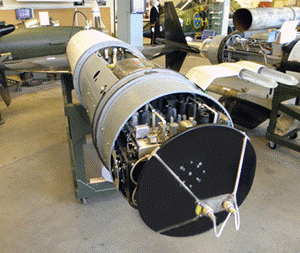
Image: Provrobot 304B in Arboga Robotmuseum for everyone to see.
The testbed Provrobot 304B was the A32A Lansen, which was conducted between 1954 up till 1962 (The missiles themselves were considered operational already in 1961). When the testing was nearing its completion, the series production of the Stridsrobot 304C (later designated as Rb 04C) began. The production of both test missiles and production variant of the missiles took place at CVA in Arboga.
In Swedish Service:
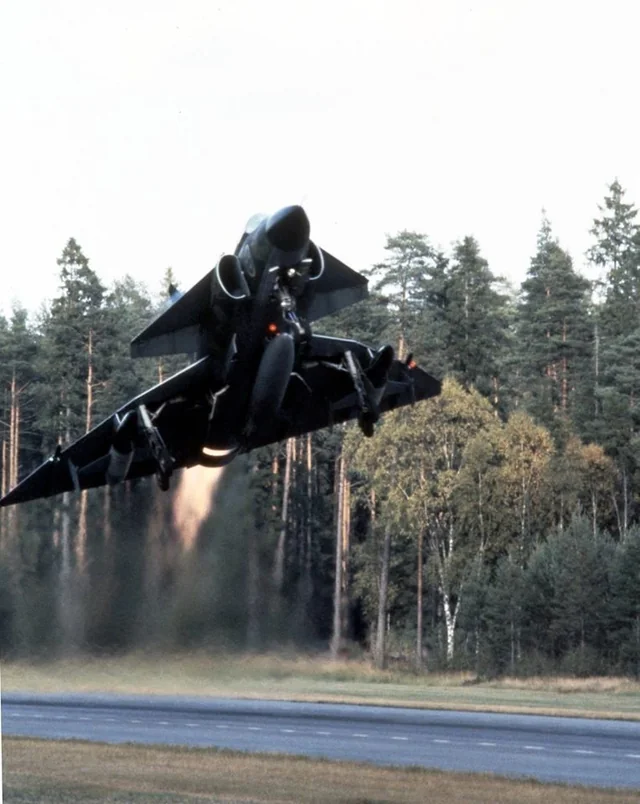
Image: AJ 37 Viggen conducting a sortie and is equipped with two Rb 05E’s
The Rb 04 was formally introduced to the Swedish Air Force around 1962. It was initially and primarily equipped on A32A Lansen squadrons that operated under “Attackeskadern (E 1)” (“Attack Command”), also nicknamed “ÖB:s klubba” (“Commander-in-Chief’s Hammer”). The A32As could be equipped with either the Rb 04C or the Rb 04D. The only difference between the two was the introduction of a new solid rocket engine, which lasted roughly 20 seconds longer, and the replacement of the batteries with maintenance-free thermal batteries. Otherwise, the missile’s specifications remained the same.
As the A32As began to be replaced by the more advanced AJ 37 and SH 37 Viggen in the mid-1970s, the Rb 04D was modified by Saab for compatibility with the Viggen and was redesignated as the Rb 04E. At the same time, its active radar-homing seeker was replaced with a more advanced monopulse radar featuring frequency-hopping technology developed by Philips. This made the Rb 04E highly resistant to ECM and capable of automatically locking onto targets that emitted powerful jamming signals.
While the Rb 04’s were never used in any conflict throughout it’s service time. The closest event it has come to being used, was during the “Whiskey on the Rocks” Incident in 1981. When a nuclear-armed Soviet Whiskey Class Submarine (S-363) under the designation U137, accidentally hit an underwater rock roughly 10 kilometers from Sydkustens örlogsbas in Karlskrona: Which it subsequently ran aground and became stuck.
During the height of the incident, with reports coming in about a imminent Soviet rescue operation. The entirety of the Swedish Armed forces was placed on high alert and the Prime minister at the time, Thorbjörn Fälldin: Gave his famous order to the Commander-in-Chief to “Håll gränsen!” (Hold the border!). The Swedish Air Force with it’s many aircrafts, including the AJ 37’s under the command of “ÖB:s klubba” were scrambled and equipped with Rb 05E’ with the intention of interecpting the Soviet ships by any means nessessary: Knowingly that the weather would not allow rescue helicopters to fly in the event of an engagement. Luckily the Soviet Union backed down at the very last minute, halting their ships just outside of Swedish territorial waters.
Specifications:
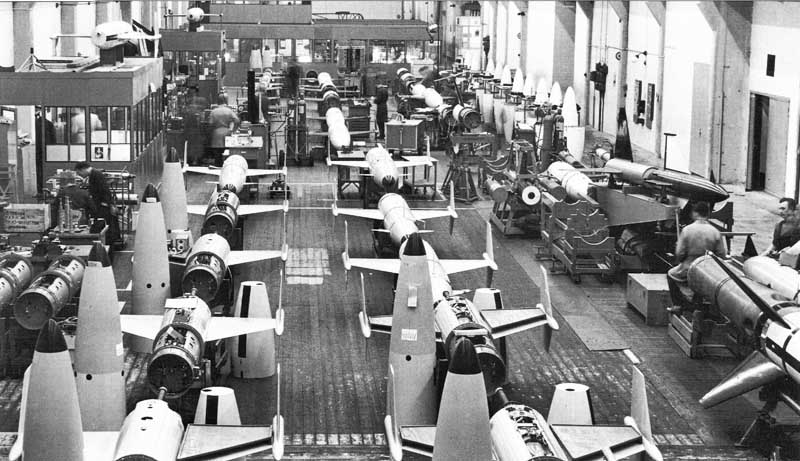
| > | Rb 04C: Attackrobot 04 Ceasar |
|---|---|
| Weight (Total): | 625 kg |
| Weight (Warhead): | 300 kg |
| Warhead: | TNT / SAP |
| Detonation Mechanism: | Impact or Proximity Fuse |
| Length: | 4,453 Meters |
| Width: | 0,5 Meters |
| Wingspan: | 1,944 Meters |
| Engine: | IMI Summerfield: KR 16C |
| Max speed: | Mach 0.7~0.92 (Subsonic) |
| Guidance System: | Active Radar homing |
| Thrust: | ~1.91 kN |
| Thrust (Time): | 43 Seconds |
| Max Range: | 32 km |
| Flight Height (Post-Launch): | 10-15 Meters (Sea Skimming) |
| Launch Platform: | A32A Lansen |
| > | Rb 04D: Attackrobot 04 David |
|---|---|
| Weight (Total): | 625 kg |
| Weight (Warhead): | 300 kg |
| Warhead: | TNT / SAP |
| Detonation Mechanism: | Impact or Proximity Fuse |
| Length: | 4,453 Meters |
| Width: | 0,5 Meters |
| Wingspan: | 1,944 Meters |
| Engine: | IMI Summerfield: KR 16D2 |
| Max speed: | Mach 0.7~0.92 (Subsonic) |
| Guidance System: | Active Radar homing |
| Thrust: | ~1.91 kN |
| Thrust (Time): | 65,6 Seconds |
| Max Range: | 32 km |
| Flight Height (Post-Launch): | 10-15 Meters (Sea Skimming) |
| Launch Platform: | A32A Lansen |
| > | Rb 04E: Attackrobot 04 Erik |
|---|---|
| Weight (Total): | 625 kg |
| Weight (Warhead): | 300 kg |
| Warhead: | TNT / SAP |
| Detonation Mechanism: | Impact or Proximity Fuse |
| Length: | 4,453 Meters |
| Width: | 0,5 Meters |
| Wingspan: | ~1,9 Meters |
| Engine: | IMI Summerfield: KR 16D2 |
| Max speed: | Mach 0.7~0.92 (Subsonic) |
| Guidance System: | Monopulse Radar Seeker (With Frequency Hopping abilities), Track on Jam |
| Thrust: | ~1.91 kN |
| Thrust (Time): | 65,6 Seconds |
| Max Range: | 32 km |
| Flight Height (Post-Launch): | 10-15 Meters (Sea Skimming) |
| Launch Platform: | AJ 37, AJS 37, SH 37, AJSH 37 |
Sources:
RB 04 - Wikipedia (English)
Robot 04 – Wikipedia (Swedish)
Soviet submarine S-363 - Wikipedia (Whiskey on the Rocks incident)
Rb 04E: the Viggen's signature weapon - DCS: AJS37 Viggen - ED Forums
